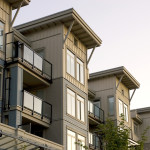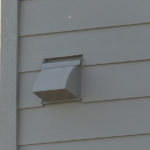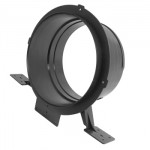 At its most basic level, a home provides shelter. It helps keep a family dry in the rain, warm in the winter and shaded from the summer sun. A home’s ability to offer a healthy and controlled living space is in many ways its most important task. So just what is it that protects a person’s sanctuary from those outside elements? A sealed building envelope is the key.
At its most basic level, a home provides shelter. It helps keep a family dry in the rain, warm in the winter and shaded from the summer sun. A home’s ability to offer a healthy and controlled living space is in many ways its most important task. So just what is it that protects a person’s sanctuary from those outside elements? A sealed building envelope is the key.
Whether you are a home developer, contractor or mechanical engineer, using this type of barrier in your projects will help avoid moisture issues, while also making for efficient heating and cooling. Unfortunately, some building materials can put that envelope seal at risk. Many modern walls are rainscreened to help ensure they keep the elements out. In fact in coastal areas of British Columbia, Canada, rainscreens are required as part of the building code. The rainscreen creates a ventilated space under the siding where water can drain and evaporate. That’s because if water is allowed to fully penetrate inside a wall it will encourage corrosion, rotting, and even mold.
The challenge with rainscreens has always been keeping them sealed. Wall vent caps are one of the common areas where water can find access points behind the screen. Cutting a hole for a vent means cutting a hole in the rainscreen. Choosing the right vent for the job will help ensure your envelope seal is protected.
A good vent cap should undergo extensive testing in wet climates to ensure it works in tandem with your rainscreen. Look for large flanges that help create a barrier to the entry of water. You should also choose vents with drip edges that direct water away from the wall. Another consideration is the molding seams on a vent which can also create paths for moisture to travel. The better a vent seals with the rainscreen, the safer you are from the damaging effects of water.
Advancements in technology and design have created effective solutions, but not all wall vent caps are created equal. They may seem like a very small part of a home, but choosing the right one for the job can go a long way in protecting what is likely your client’s largest investment.



